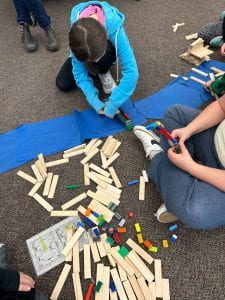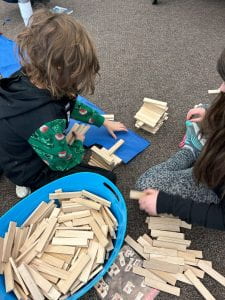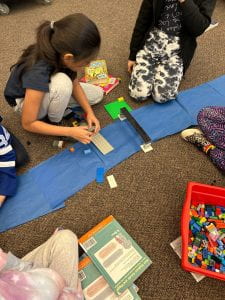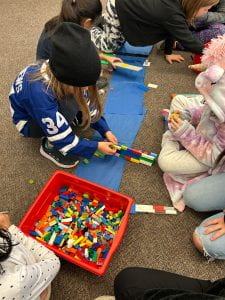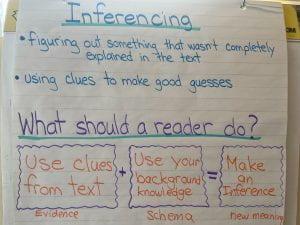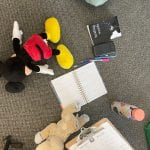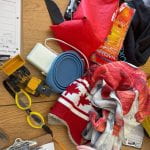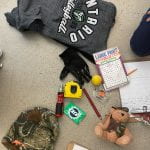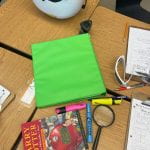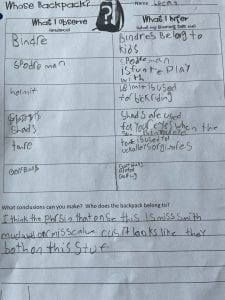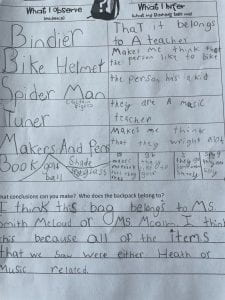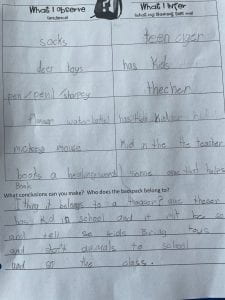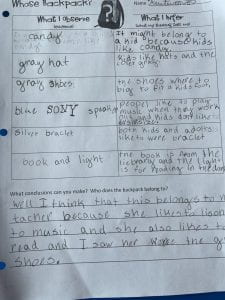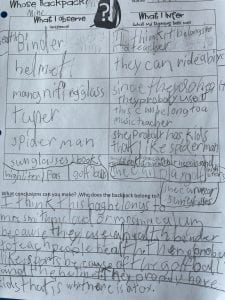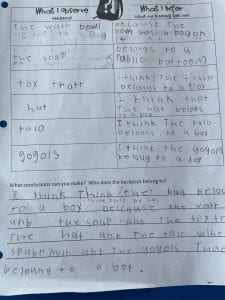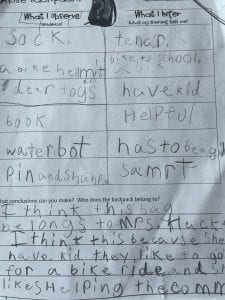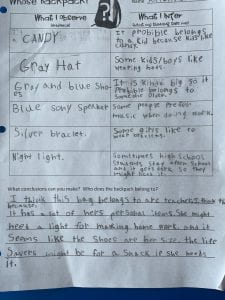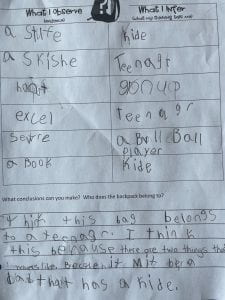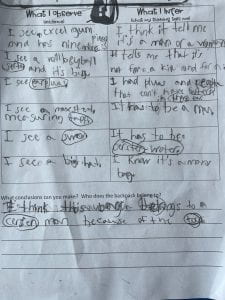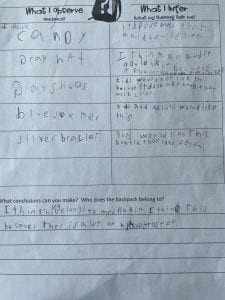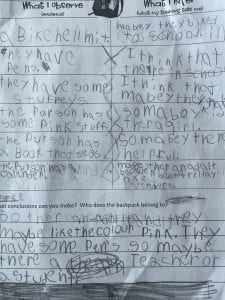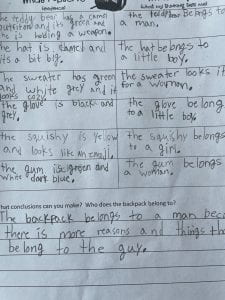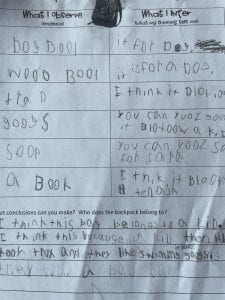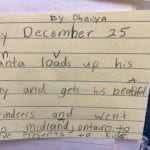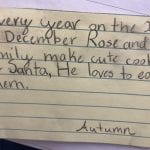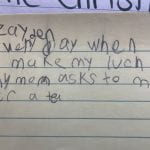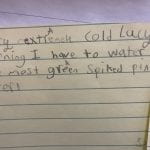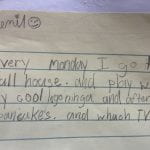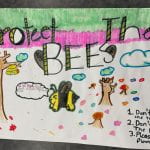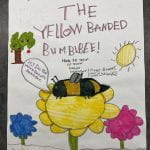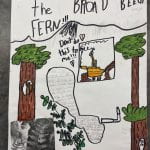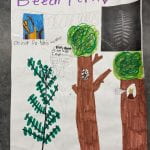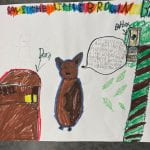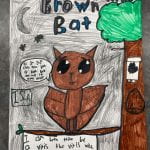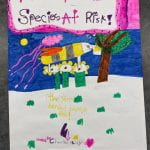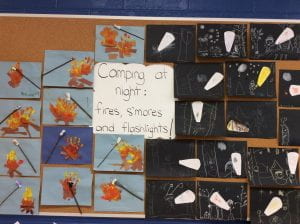Category Archives: Reading
Be A Bridge
This lesson started out in the library with Mrs. Randall, our librarian, reading a story, Be A Bridge by Irene Latham and Charles Waters.
After a short discussion, students thought about what they could do, today, to be a bridge. They recorded their ideas.
Next, students engaged in a STEM activity in which they needed to use the provided materials to build a bridge that would span the river.
What’s Going On?
Asking Deep-Thinking Questions
This lesson started out with a quick discussion around the difference between quick questions and deep-thinking questions.
Then, we read a fun story that we all connected to. We have all had the experience of feeling bored. In this story the main character asks a lot of deep-thinking questions.
After identifying the deep-thinking questions and discussing possible answers, we added Thinking Stems to our Inferencing anchor chart.
The next step was to begin writing our own questions. We used Padlet to collect and organize everyone’s questions.
Tomorrow we’ll use those sentence stems to write a paragraph to answer some of those questions!
An Introduction To Inferencing
We have begun a literacy unit with Inferencing.
First we discussed the meaning of inferencing and what that looks like while reading. An anchor chart was created as we talked.
Then, students were given a bag of items with instructions to use the clues to determine who the bag might belong to.
Here’s what each group had inside their bags:
Students recorded their evidence and made their inferences. Our next step will be to establish thinking stems to help write our thoughts clearly and with detailed explanations.
Visitors: What do you think? Do you agree or disagree with the students? Who do the bags belong to?
The Christmas Tree Ship and a Mentor Sentence
While we read a print copy of this story, you can listen to the story here:
The students enjoyed thinking about history as we read this book, based on a true story. The students worked to identify the problem and solution. They also worked on inferencing skills throughout the reading.
Then, we read the following mentor sentence and examined it for verbs, nouns, adjectives. We also pointed out the temporal words. Students also noticed commas.
“Every year Captain Santa would load up his little schooner, Rouse Simmons, with thousands of beautiful Christmas trees from our northern Michigan forests.”
Today students were invited to imitate the sentence on sticky notes. Here are some examples:
My Just Right Tree
We started this project off with a couple of read alouds, giving students the opportunity to think about story elements. After each reading we discussed the main characters and their feelings and how those connected to their actions. We identified the problem and solution while retelling important events from the beginning, middle and end of the story.
Then, students were challenged to create a list of adjectives and phrases to describe the perfect holiday tree in their minds. The list was then used to draft a descriptive paragraph. Students then published their paragraphs on a shared Google Slide and added a drawing using Google Draw.
Mentor Sentence – Descriptive writing
Today we read the book, “Owl Moon” by Jane Yolen.
This sentence was chosen from the book to examine:
Our Feet crunched over the crisp snow and little gray footprints followed.
Students: You are invited to “imitate” this sentence. Respond to this post with your own descriptive sentence that is similar to this one.
Species At Risk
This project began with a presentation by the Ontario Parks, “Species At Risk”. Then we continued our inquiry with a poster project.
This is the task the students were given:
As students began working we engaged in small group guided reading of the information slides and had some lively discussion about the information presented. Students worked on determining important information, making connections, and inferring.
Some students chose to work individually and some chose a partner. They had the choice to use Google Slides or create a paper poster.
Time: Night and Day
Students have been thinking about time. We talked about the difference between night and day. They thought about things they see at night and things they see in the day. Then students compared actions that happen at night and in the day.
We read a story about night. This is a wordless story, so students looked at the pictures and told the story.
Then we did a couple of art projects: campfires and flashlight scenes!


